Atlassian Summit Survey Results Are In
It's no secret that Confluence is a powerful platform for documentation collaboration. At Atlassian Summit 2015 we asked visitors to the K15t Software booth to help us shed some light on the ways that their organizations leverage this power. One of the things we love about Summit is the unique chance it offers to gain insights straight from users. Participants were asked to share details on how their organizations use Confluence, who they share content with, how their readers access this content, and more. We collected over fifty responses, and the results are below.
How does your organization use Confluence?
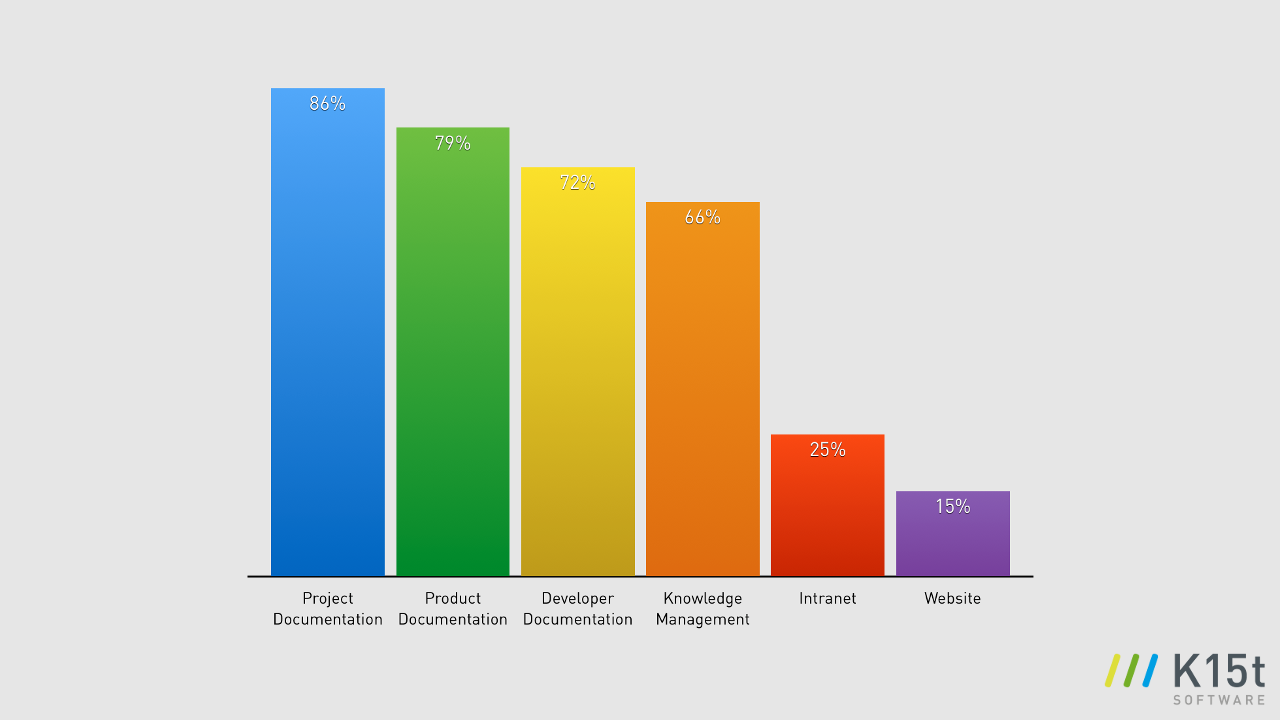
Survey participants most commonly told us their companies use Confluence for project documentation (86% of organizations), closely followed by product documentation (79%). Developer documentation and knowledge management were the runners-up, with 72% and 66% respectively. Just 25% of organizations use Confluence for their intranet, and 15% use it to power their websites.
It's clear that many businesses are leveraging Confluence to enhance their collaboration and documentation, but comparatively few are taking advantage of it to perform additional functions. Here at K15t Software we're a 'yes' all across the board. We use Confluence both for our intranet, and as a content manager that powers the website you're viewing right now. Confluence can be a great tool for more than collaboration—with the right add-ons, it becomes a single-source solution for a broad range of organizational challenges.
K15t Software's Scroll Viewport add-on gives a whole new dimension to how you can use Confluence, delivering your content to the web easily, responsively, and rapidly—all while giving you complete control over styling and publishing.
Who Do You Collaborate With in Confluence?
We asked respondents to share not only what their businesses use Confluence for, but how they use it as well. A key component of this is who they share content with, and how often. An organization's approach to collaboration determines to a great extent what benefits they gain from the platform.
Within my team
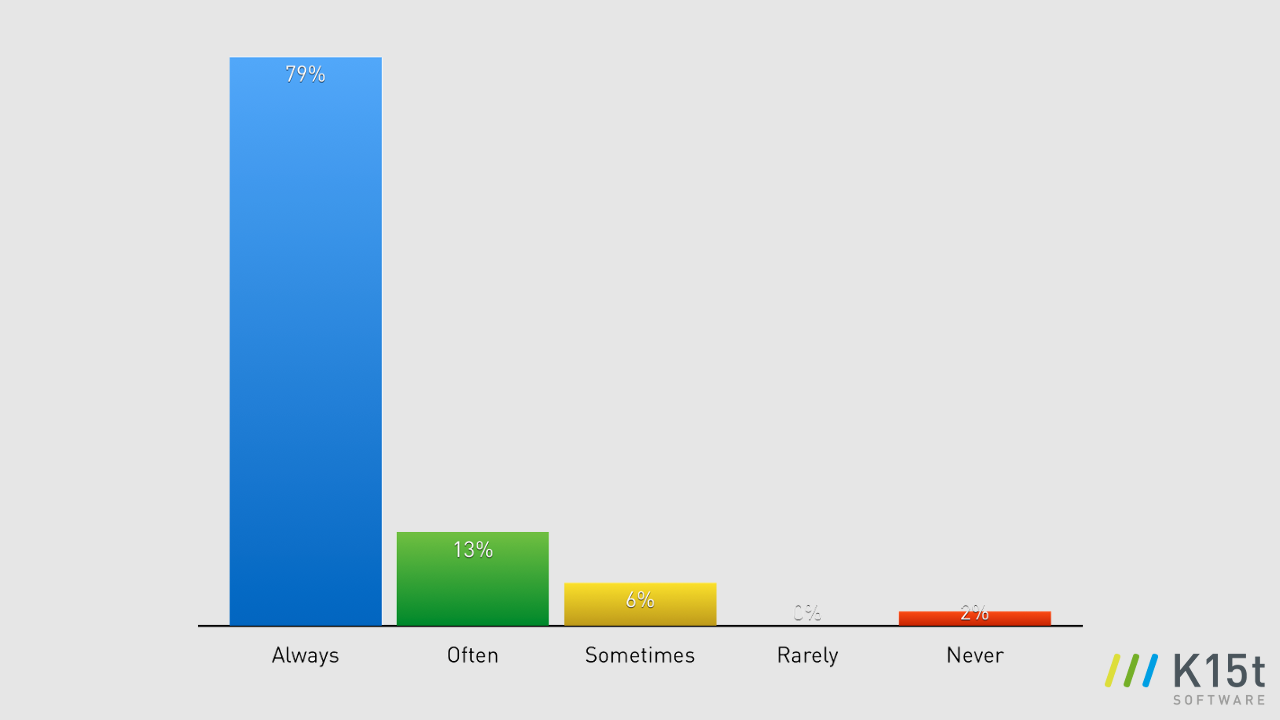
We found that the overwhelming majority of users 'always' share content within their own team (79%). Most of those who don't always share within their team still do so 'often' (13%), or at least 'sometimes' (6%). Of our respondents, only one replied that they never share content within their own team. These answers were no surprise—after all, why use a collaboration platform if you're not going to share content with those who work most closely with you?
With other teams in my organization
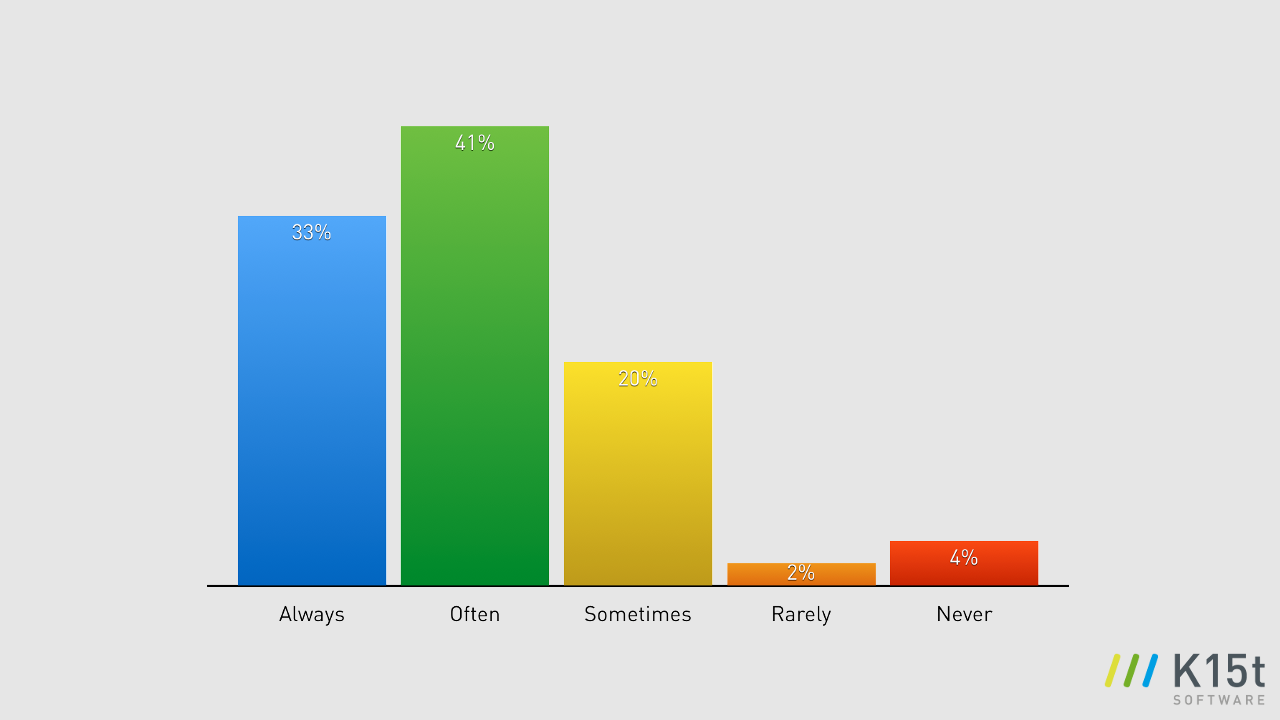
One of the main benefits of using Confluence is that it allows teams across an entire company to collaborate effectively, and most users either often (41%) or always (33%) share content with other teams in their org. Making information openly and easily accessible to other users and teams can result in a significant increase in organizational efficiency, and having a single source of truth means a drastic reduction in ambiguity, loose ends, and instances of outdated information. This is a core strength of Confluence, and it's clear that many companies rely heavily on it.
With external organizations
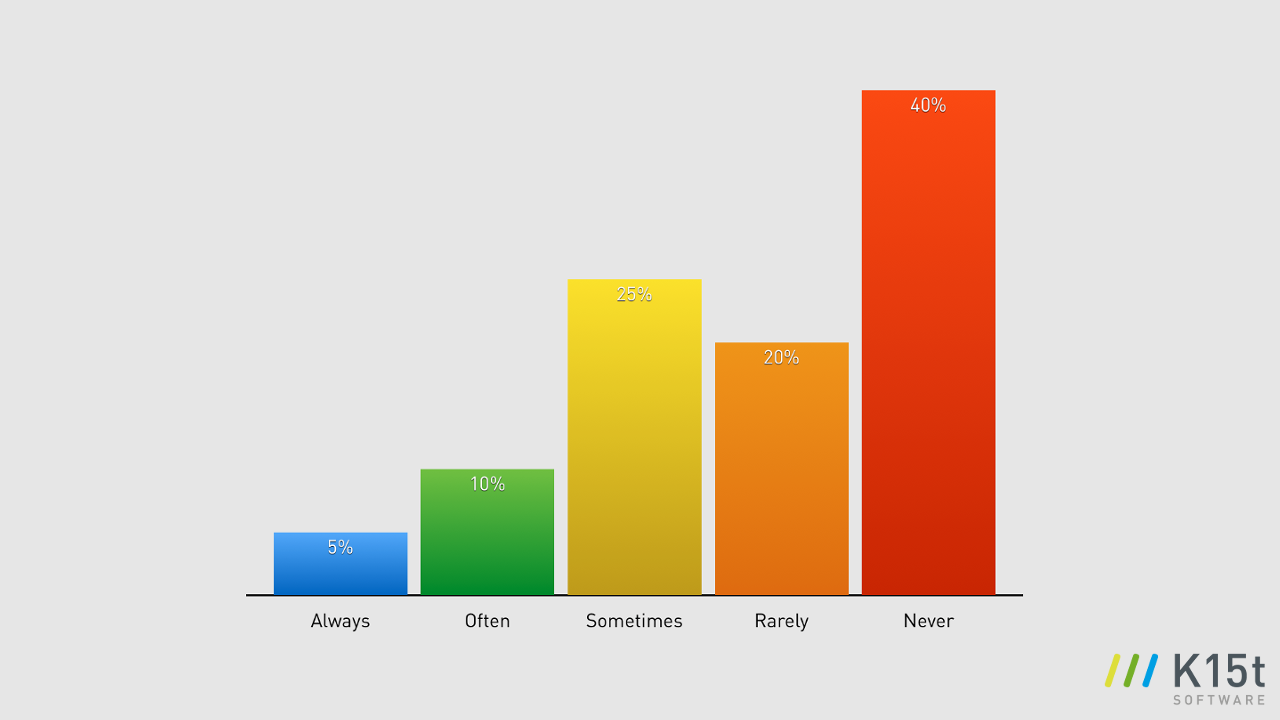
Confluence also allows you to determine exactly who can access what content, and while an open data repository is beneficial internally, the ability to choose who you share information with is important for inter-company collaboration. 40% of respondents never share Confluence content with external organizations. One in four sometimes do, while 20% state that it happens rarely. In contrast, 10% of respondents often share content with external organizations - and 5% always do. There is clearly room for more organizations to be taking advantage of this functionality.
Sharing Confluence content externally can be done in several ways. Depending on what format is desired, K15t Software Scroll Exporter add-ons can make it a snap. Or you can set up a space that can be viewed with an anonymous login. Learn how to do it on Atlassian's documentation site, which is published to the web from Confluence with Scroll Viewport (demonstrating yet another way to share information between companies).
With customers

The question of sharing Confluence data with customers drew varied results that trended toward low frequency, with the most popular answers being never (37%) or sometimes (27%). 16% of participants only rarely share content with customers, while 14% do so often. Just 6% of respondents always share content with customers. Again we see an area where workflows built with exporting Confluence content, publishing it to the web, or even setting up access for anonymous logins for customers could allow companies to get more done with Confluence than they currently are.
How do your readers access Confluence content?
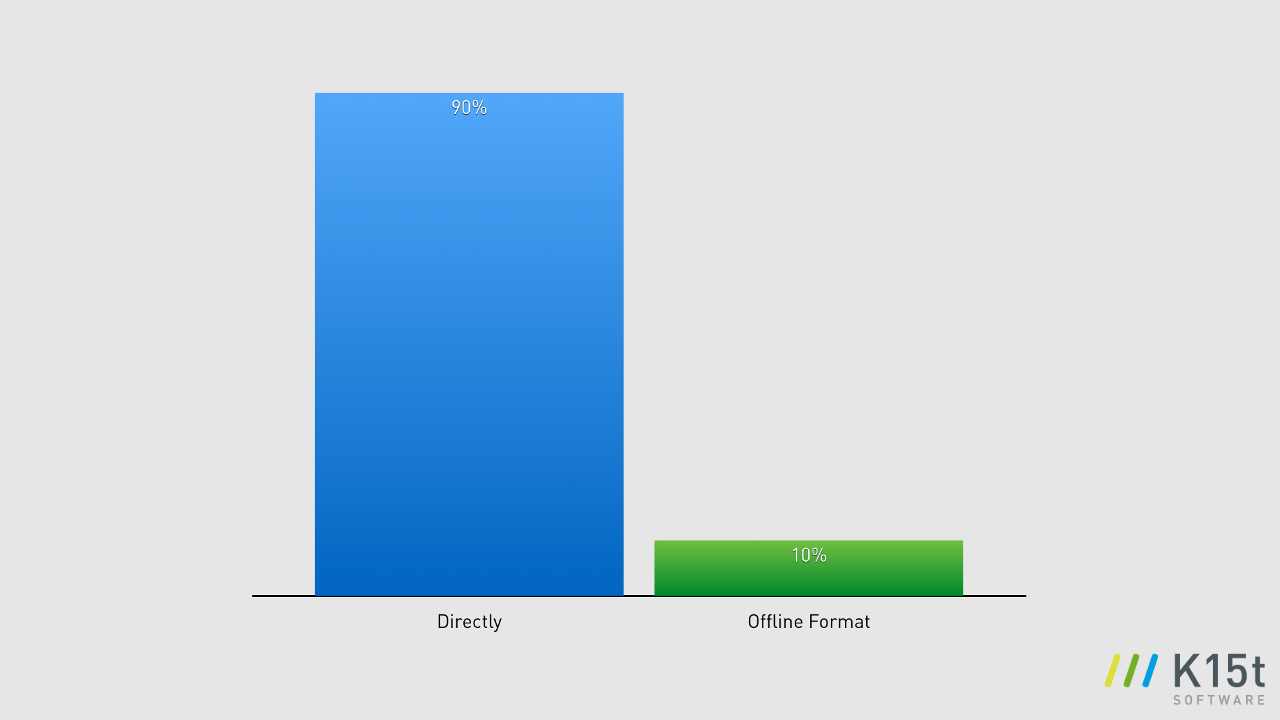
Online versus offline content access showed a dramatic split, with 90% of participants interacting with content directly within Confluence on the web. Only 10% consume content in an offline format such as PDF, Word, or other types of documents. Considering the number of companies worldwide that still have heavy offline document requirements, this would seem to suggest that either companies represented at Summit are leading the paper-free charge or that there is an under-utilization of Confluence for offline workflows.
What's your Confluence user tier?
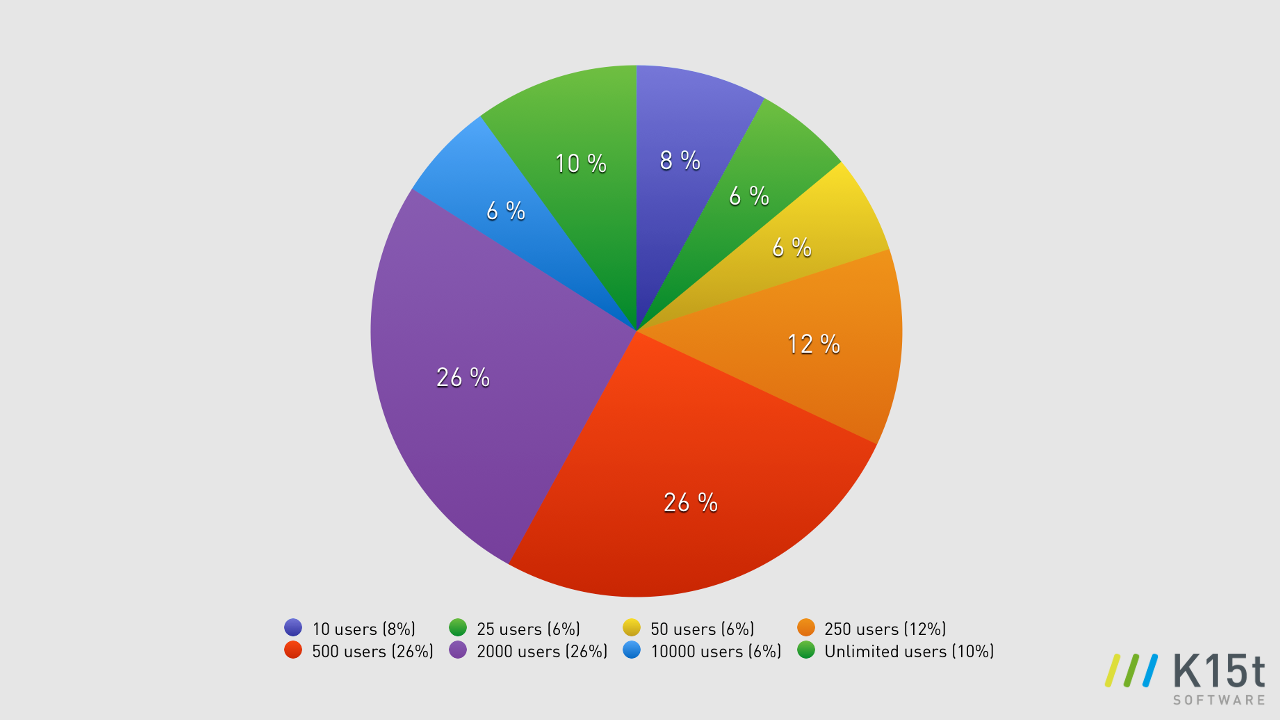
We asked about the user tier of participants' organizations to see if there was a trend in our other results that could have been caused by the overrepresentation of larger or smaller companies. The results were quite broad, though the 500 and 2000 user tiers both clocked in at 25.5%, together making up just over half of our respondents. Overall, Confluence users at Atlassian Summit were representative of use tiers of all sizes, running the gamut from the 10-user tier (8%) all the way to the 10,000-user tier (6%). One tenth of respondents reported being at the unlimited user level.
Where is your organization's Confluence platform hosted?
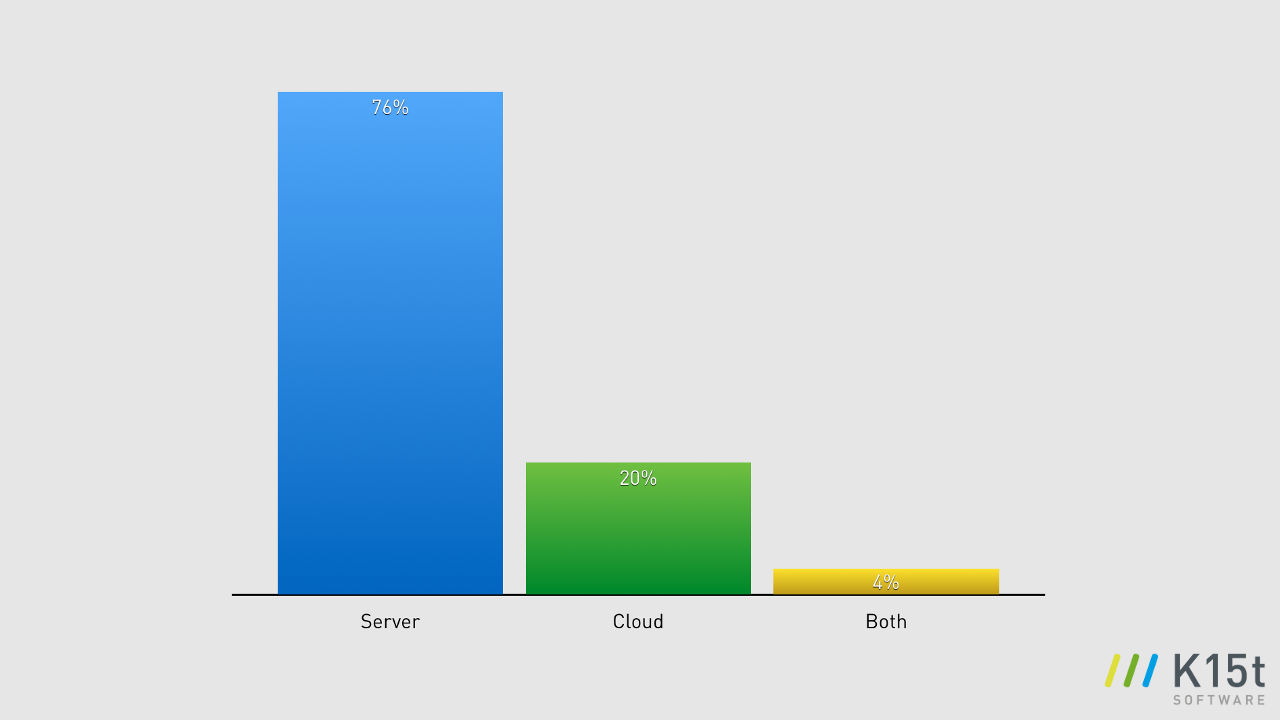
As our final question, we asked how respondents host their platforms—on a server or in the cloud. The most popular approach to hosting Confluence as reported by our participants is still overwhelmingly on a server (76%), while one in five respondents' instances are cloud-based. A minimal number use both server and cloud (4%). Due to the winds of change sweeping much of our digital world into cloud-based formats, some of us were surprised to have our visitors report such high server instance usage. One possible explanation is that companies (rightfully) place a very high value on their knowledge, and when it is stored in Confluence many also want to take ownership of the hosting of that data.
Takeaways
Many organizations are certainly using Confluence for what it does best—enabling teams to collaborate effectively. Documentation and knowledge management make up the lion's share of Confluence use cases surveyed. Yet comparatively few organizations have taken their Confluence use to the next level, leveraging it for their intranet, or even to power their website. With the right configuration and add-ons this functionality can be implemented with ease, and we see great potential for many more companies to embrace this.
The vast majority of Confluence users share content within their team and with other teams in their org, allowing them to efficiently collaborate across multiple projects and departments. Conversely, most companies seem to be keeping this collaborative functionality separate from external organizations. Confluence is relied on as a platform to enable and enhance internal collaboration, but once again with the right tools and setup its use can be extended far beyond this core case.
Organizations' user tiers surveyed at Summit were widely varied. Though just over half of our respondents have either the 500 or 2000-user tiers, the rest of the results were spread between the other tiers—from 10 to 10,000 or more. This makes the 'typical user tier' difficult to pigeonhole. We feel this diversity is healthy, as the Confluence platform is being shown to meet a wide variety of organizational needs and allow companies to start early and grow their businesses without switching platforms. Most organizations are still using the tried-and-true server hosting method, though a cloud-based approach has certainly gained a strong foothold that will likely only get stronger as time goes on.